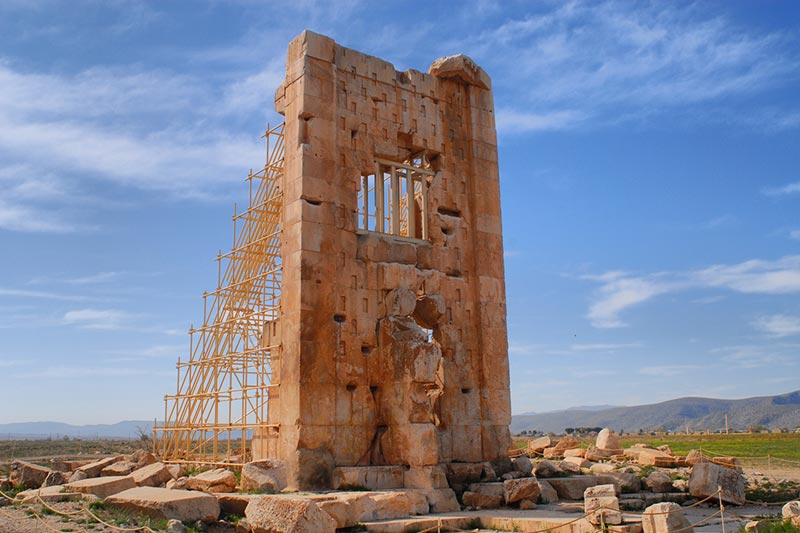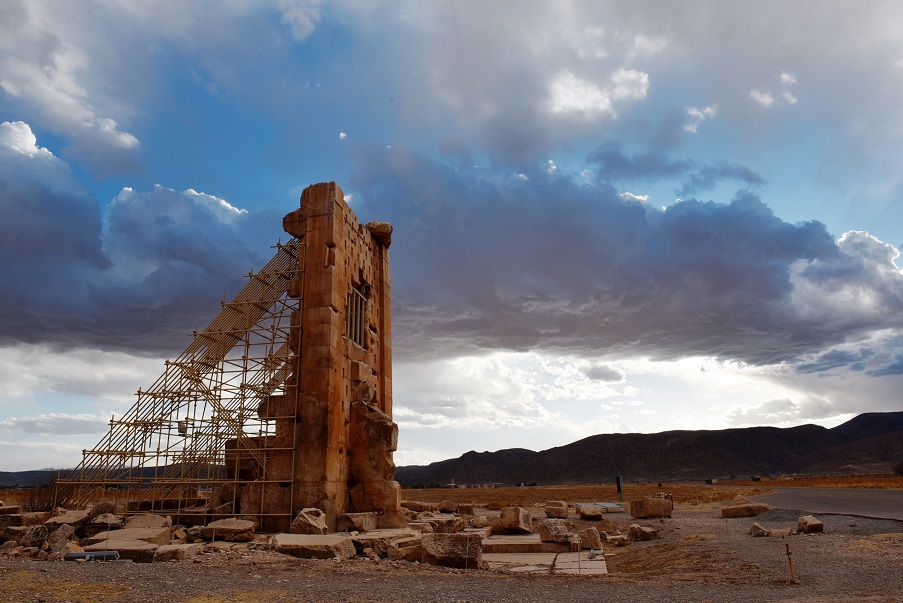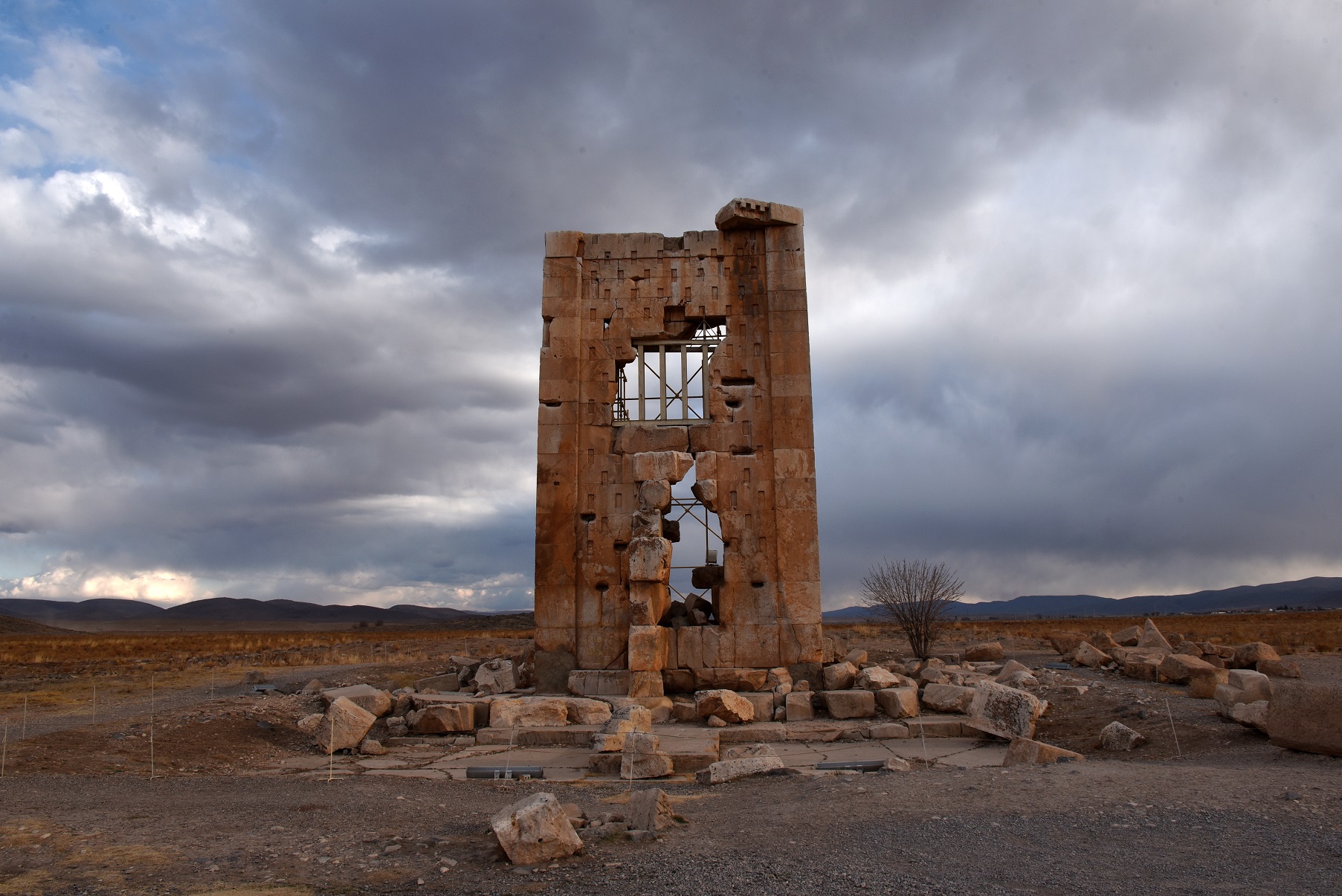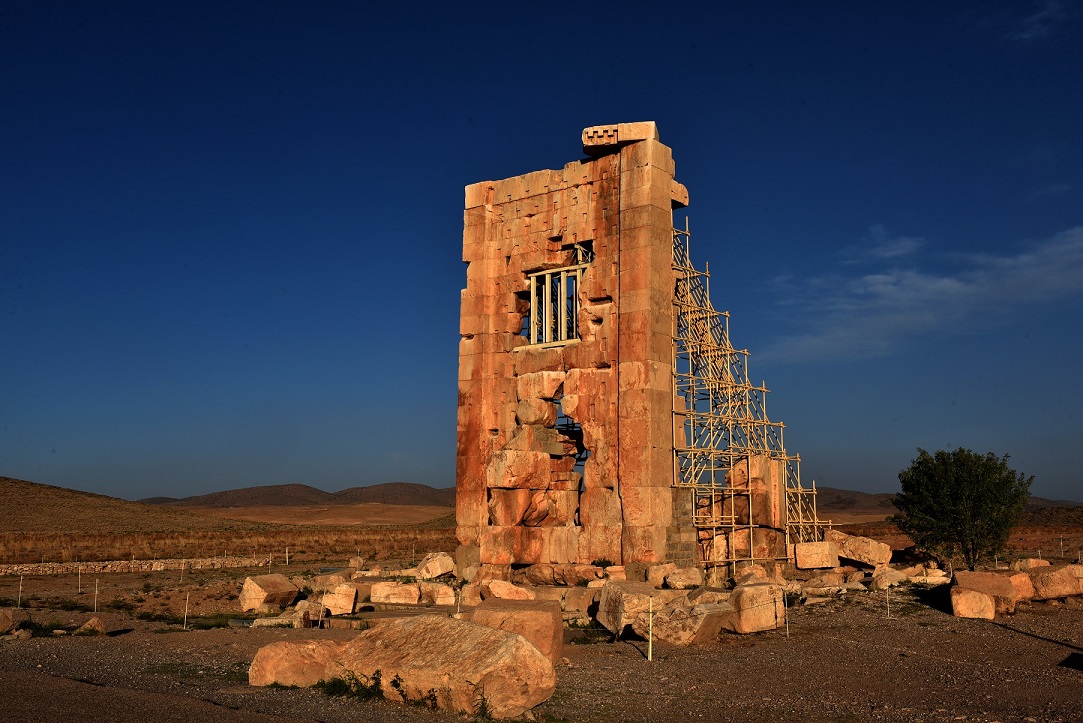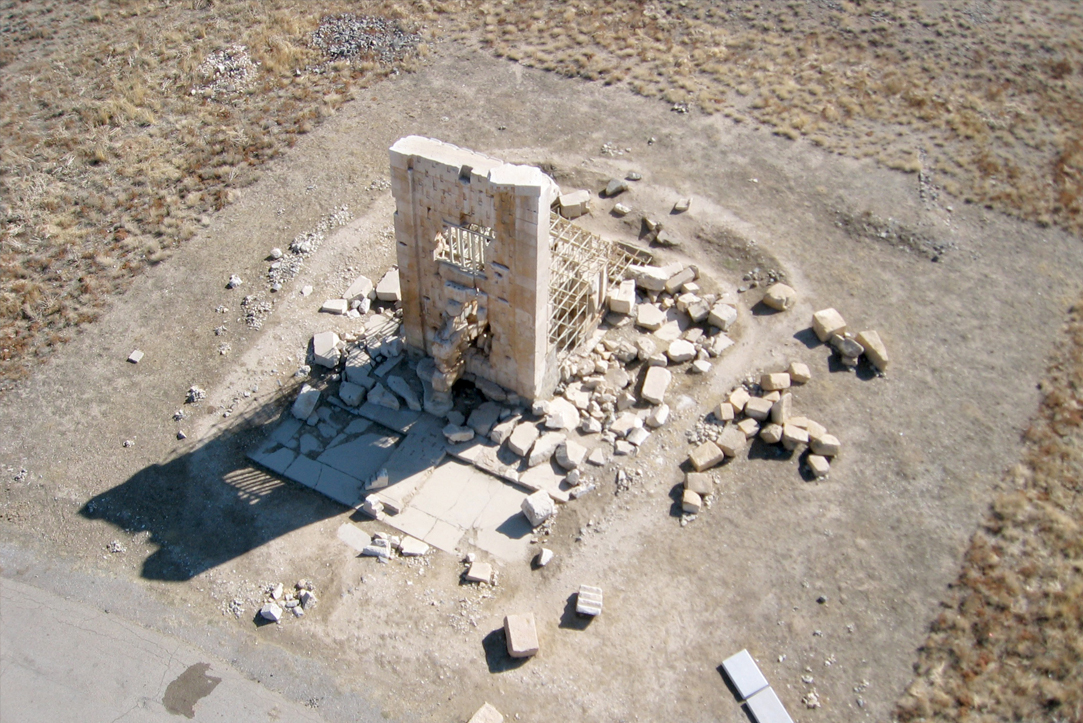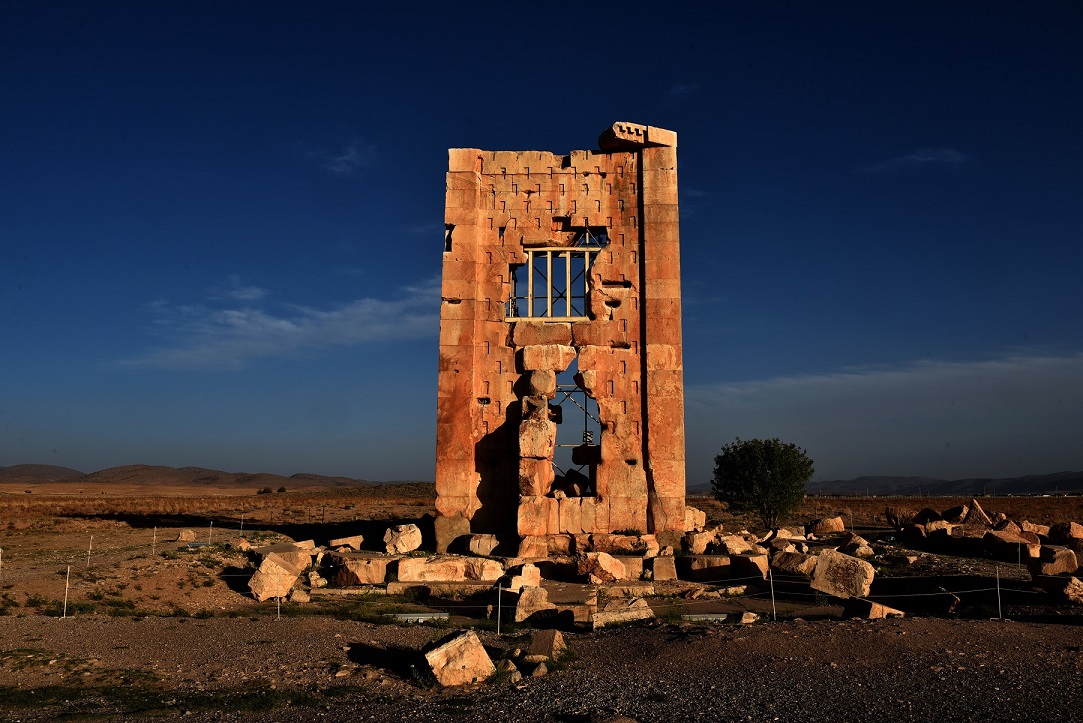Not far to the north of the palace area, a fourteen-meter-high tower still boasts a more or less intact entrance façade. The tower was built almost exclusively by finely cut slabs of white limestone with the striking exception of three rows of windows that are in dark limestone. The location of the windows is visibly not related to the interior plan of the building, which was a single room raised above almost eight meters of solid masonry.
The only entrance to this single enclosed chamber was via a monumental external stone staircase that reached a largely elevated doorway. Closely-spaced with shallow recesses, they were presumably intended to create alternating patterns of light and shade on the tower’s once brilliantly shined white walls; it also documents an unusual innovation; for the reason that while dichromatic effects of light and dark stone are not uncommon at Pasargadae, such shallow recesses are only found on the exterior of the Ka’ba-ye Zardosht at Naqsh-e Rostam, a monument that constitutes of an almost exact replica of the Pasargadae tower. Surprisingly, the first aerial photos show that the tower was originally confined by a thick enclosure wall as well as a structure consisting of narrow parallel rooms directly behind it, suggesting that the tower was only one element in a larger complex.
The close association between the Pasargadae tower and Ka’ba, and the overall absence of other Achaemenid buildings with similar character can only be explained in terms of their related functions. This issue has been widely argued, for example, those that suggest the twin structures were used as fire temples, tombs, treasure troves, or investiture towers.



